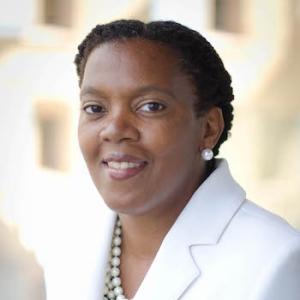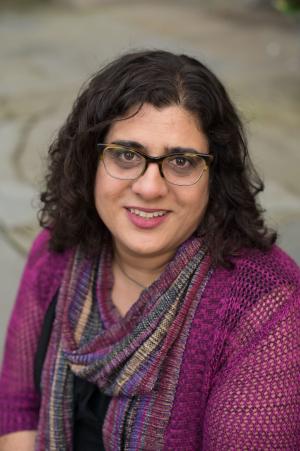Resources
Dr. Steed Davidson is the Executive Director of the Society of Biblical Literature.In what ways do faculty positions prepare you for administrative jobs? What kind of professional formation is needed to be an administrator? How important is your team to achieving an organizational vision? What if imagination is the best skill of an administrator?
Hosted by Wabash Center Director, Nancy Lynne Westfield, Ph.D.Webinar Producer: Rachel MillsSound Engineer: Dr. Paul O. MyhreOriginal Podcast music by Dr. Paul O. MyhreDialogue on Teaching, Wabash Center’s podcast series, is hosted by Nancy Lynne Westfield, Ph.D., Director of the Wabash Center. Amplifying the Wabash Center’s mission, the podcasts focus upon issues of teaching and learning in theology and religion within colleges, university, seminaries, as well as the publics impacted by these schools. Dialogues with faculty and administrators working in the wide range of institutional contexts illumine the complexity of teaching and the teaching life.
Phillis Sheppard is E. Rhodes and Leona B. Carpenter Professor of Religion, Psychology, Culture and Womanist Thought, and Executive Director of the James Lawson Institute for the Research and Study of Nonviolent Movements at Vanderbilt University. Life is a series of transitions. Transitions of an academic career can leave one feeling overwhelmed, exhausted, or agitated and angry. How might life transitions be negotiated for wellness, mental health, and thriving?

The WizIt is the malleability of the Oz story to reflect different social, historical, and cultural contexts while utilizing recognizable symbols – special magical shoes, the Yellow Brick Road – which makes it such a powerful myth of America. Early in the twentieth century, within a few years of the publication of The Wonderful Wizard of Oz, stage productions had already begun. The 1939 MGM film in which the title was shortened to The Wizard of Oz proved to be iconic in its portrayal of the story of Dorothy and her friends’ journey through the magical land of Oz and their journey of self-discovery. Oz started out as a literary narrative but is retold as a musical film. The Hollywood film musical was well established as a featured genre in which songs, their lyrics, and dance sequences were part and parcel of the narrative. The film musical, in turn, drew on the tradition of musical theatre. Musical theatre’s earlier predecessors included vaudeville, and prior to that, the minstrel show, the earliest popular stage entertainment in the United States.Minstrel shows emerged in the nineteenth century as performances of imagined blackness based on racial stereotypes. Minstrel shows featured white performers in blackface (makeup, wigs, and costuming). Minstrel shows proved to be so popular that there were minstrel shows featuring black performers who donned costume and makeup on stage to perform caricatures. While minstrelsy was supplanted by the movies as the most popular form of mass entertainment, it still lingered well into the twentieth century in stage shows and in film. Reflecting segregationist policies of the era, not many people of African descent who identified as black were cast in mainstream musical theatrical productions. Coupled with this practice, there were all-black musicals on Broadway. In Dahomey was the first such musical, staged in 1903. Others followed in subsequent decades leading up to the staging of the 1964 all-black cast of Hello Dolly! featuring Pearl Bailey in the title role.The introduction of The Wiz in the mid-1970s featuring an all-black cast should not be separated from its contemporary sociocultural or historical context. This staging drew on Baum’s original storyline, as well as on the 1939 MGM musical, but the story was transplanted from turn-of-the-century Kansas to contemporary urban, black America. The full title was The Wiz: The Super Soul Musical of “The Wizard of Oz.” This title was a statement about the musical’s positioning in relation to the 1939 film The Wizard of Oz which itself was positioned in relation to Baum’s novel The Wonderful Wizard of Oz. And so, as an audience, we are presented with a version of a version of a version in the fashioning of an authentic representation. The direction and creative costume design by Geoffrey Holder is in itself worthy of exploration, as I will discuss below.Occurring only a decade after the tumult of the 1960s, The Wiz reflected 1970s black American musical genres incorporating soul and gospel-tinged R n’ B in its lyrical content. Its storyline featuring a young Stephanie Mills as Dorothy provided a powerful message of belonging, self -awareness, and affirmation of black identities through embodied performances. With costumes by Trinidadian-born dancer, choreographer, actor, and artist, Geoffrey Holder, the musical was a triumph, winning seven Tony’s (considered the pinnacle of awards for Broadway musical theatre) in 1975. These included Best Musical and two for Holder as director and choreographer.

The day before we were told to go online, rumors that we would transition were flying think and fast. It was a Tuesday. I was supposed to head to Vanderbilt that evening to give a talk on Wednesday, but the night before, it had been canceled. Given this, I suspected that we (CU Boulder) would be going online soon. Earlier in the day when I met with my seminar (a class that, despite being label a seminar, had over 30 people), I told them that I thought online was coming. The entire room burst into conversation, much of it unease, some of it amusement, most of it because they knew I was barely managing our minimalist Canvas site. We had already experienced some small adaptations together. A week or two before, a student who was experiencing back spasms asked if she could lie on the floor during the class. I said yes, and she participated while lying flat on her back. Prior to our last in-person session, a student had emailed me to say that he thought he had Covid-19 and asked if he could attend via FaceTime, on a classmate’s computer. I said yes, and he participated from his screen. Using that flexibility as our foundation, we spent 30 minutes planning our online transition together. In the end, I am responsible for the decisions that were made, but I am very glad that my students and I worked through the plans together. We discussed the possibility of meeting over Zoom. While people really liked our classroom community, we had concerns about trying to have a 34-person conversation over the computer. (At this time, I had never used Zoom and did not realize that I could break the class into small groups with the push of a button.) In addition to questions about the feasibility of the Zoom platform, students were anxious about internet access, changing work schedules, and responsibility for younger siblings. So, we decided that we would have discussion boards. I asked them if they thought that it would be fair to have everyone post one initial thought and two comments on existing posts per day. We agreed, as a group, that one comment could be part of an ongoing conversation on your own post, but that the other comment had to be on someone else’s. We discussed what they wanted and needed in order to make this plan work. Deadlines. They wanted clear deadlines and they wanted me to promise that I would not move things around on them. As the semester would wear on, one by one, they would repeatedly thank me for never moving anything around. We agreed that the initial post needed to be up by the start of class time, and that they had 25 hours to post responses. I talked about what I wanted in the discussion boards: for them to try not to repeat each other, and to make sure that someone commented on almost everyone’s post. When I brought up that second concern, one student nodded. I knew she would monitor our inclusivity. I was delighted, and feel that I can take very little credit, for what happened on our discussion boards over the following weeks. I posted questions to get them going; one of which was always, “Share a quote that struck you as interesting and tell us why you were intrigued by it.” They answered. They picked quotes they liked, they picked quotes that they did not understand, they picked quotes for which they needed more context. They brought their confusion to each other. Frequently, I would log in to discover that a question posed late at night, and probably aimed at me, had been answered by a student before I woke up. But maybe more impressive than their willingness to share their vulnerability, to share their “I do not knows,” they were willing, firmly and politely, to disagree with each other. They challenged each other repeatedly. They debated interpretations of texts, but they also called each other on more charged issues, like failures to see structural racism. Each time, I was struck by the fact that they did so without pointing fingers or descending into accusation. They remained firmly in intellectual community with each other. To be clear, some of these things had been happening in the classroom all along, but most were not, or at least included only the most talkative of the class. These discussion boards were very surprising to me, and upon reflection, I think this kind of connection occurred because I let them choose a format. I did not let them chose the format because I knew that it would lead to these conversations—I did it because I have never taught online, did not know what to do, and wanted to get buy-in for my plan. Wonderfully, my students responded by taking ownership of the space. They had been asked what they wanted to do, and with that freedom they went ahead and did it.
Philip Butler is Assistant Professor of Theology and Black Post-Human Artificial Intelligence Systems at Iliff School of Theology. What if teaching had the audacity to pose questions which disrupts reality? What if the disruption was generative, imaginative, and healing? This conversation grapples with what it means to teach at the intersection of neuroscience, technology, spirituality, and Blackness to prepare futures and reimagine leaders.